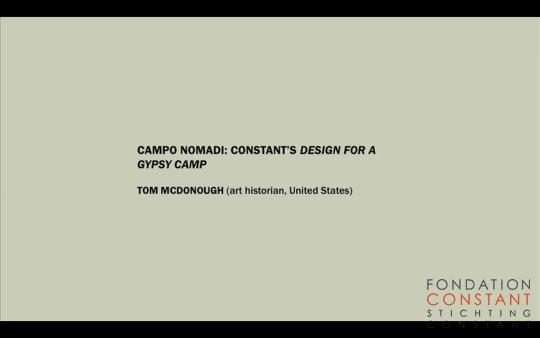Image


1784
Lecture by Tom McDonough on Constant's Design for a Gypsy camp in connection to Arno Mik's larger model of the Design for the Roma paviljon, Call the Witness during the Biennale in Venice, 2011.
The figure of the “gypsy” has had a long life in the imaginary of western European artists, from the nineteenth-century romantics to the bohemians of the early twentieth century. As McDonough explains in this lecture, the visionary model for a “gypsy camp” by the Dutch painter-turned-architect Constant Nieuwenhuys (1920–2005) both builds upon and departs from this imaginary, informed as it was by the conflict of the Second World War that had seen the attempted extermination of Roma people by the Nazi regime. Spurred by his friend, the Italian painter Giuseppe Pinot-Gallizio, who offered his land in the Piedmont region of Italy for the use of a Roma community, Constant designed a mobile setting for a nomadic people, foreshadowing his great “New Babylon” project of the coming decades. Caught between a romantic stereotype and critical functionality, this work, Design for a Gypsy Camp (1956–1958), is both an architectural setting and a utopian social model. If it indulges in an increasingly anachronistic myth of the “vagabond gypsy,” it also imagines a society free of the constraints of the nation-state, an egalitarian society whose members could devote themselves to the exercise of freedom. Over a half-century after its conception, its ambivalent address to a refugee population—as both political subjects and fantasized others—remains distinctly resonant. (Tom McDonough)
No related items available
No related items available
No related items available
No related items available
No related items available
| Title | Year |
|---|---|
| Ontwerp voor een zigeunerkamp in Alba | 1956 |
No related items available
No related items available